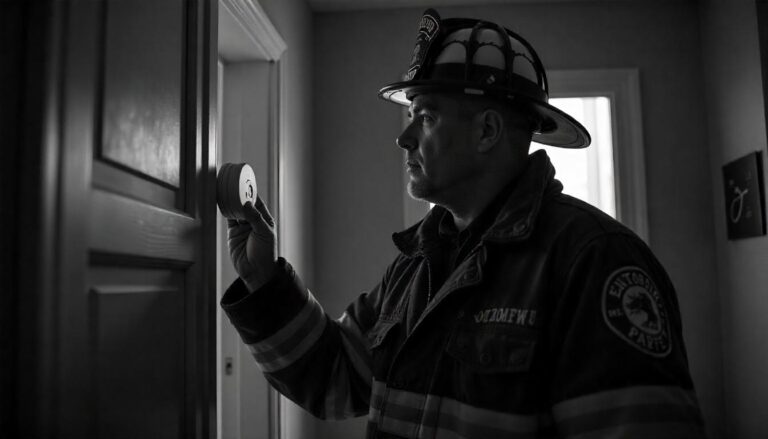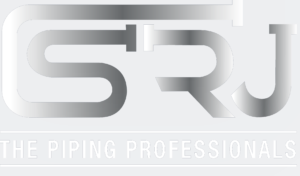Investigating Fire System Testing Failures: The Shocking Truth About Non-Compliance
Table of Contents
The piercing shriek of a fire alarm, the frantic scramble for safety, the devastating aftermath of a fire – these are the images that haunt the nightmares of facility managers and business owners alike. While proactive fire prevention measures are crucial, the actual test of a fire protection system lies in its ability to perform flawlessly when called upon.
The frustrating reality, however, is that fire system testing failures are far more common than many realize. These failures, often masked by a false sense of security, can have catastrophic consequences. This guide provides a comprehensive examination of fire system testing failures, revealing the alarming truth about non-compliance, identifying the root causes behind these failures, and offering systematic, actionable solutions to ensure your fire protection systems are fully prepared when you need them most.
Prepare to uncover the hidden vulnerabilities that may be lurking within your fire safety protocols and discover how to transform them into strengths.
Defining the Industrial Problem
Fire system testing failures represent a significant and often underestimated threat to industrial facilities. These failures occur when a fire protection system, or a component thereof, fails to perform as designed during routine testing or, more critically, during an actual fire event. Symptoms of this problem can manifest in various ways, including:
- Failure of fire sprinklers to activate upon smoke or heat detection.
- Malfunctioning fire alarms that fail to sound or provide inaccurate information.
- Inadequate water pressure or flow from fire hydrants.
- Fire pump failures are preventing a sufficient water supply to the system.
- Communication breakdowns within the fire alarm system are hindering effective response.
- Errors or omissions in fire safety compliance audit reports.
- Unresolved issues identified during fire system inspections.
Common occurrences include recurring false alarms, indicating underlying system instability; corrosion or damage to sprinkler heads or piping; and outdated or improperly maintained equipment. The initial perceived causes often point to simple equipment malfunctions or human error during the testing process. However, a thorough investigation frequently reveals a more complex web of underlying factors.

The Investigative Framework: A Systematic Approach
To effectively address fire system testing failures, a systematic and objective approach is essential. This investigative framework involves a series of steps designed to identify the root causes of the problem and develop targeted solutions.
- Data Collection: Gather all relevant documentation, including fire system design specifications, installation records, maintenance logs, testing reports, inspection reports, and any incident reports related to fire safety.
- System Assessment: Conduct a comprehensive physical inspection of the fire protection system, examining all components from the fire alarm panel to the sprinkler heads and fire hydrants. Note any signs of damage, corrosion, or improper installation.
- Functional Testing: Perform thorough functional testing of each component of the fire protection system, following established testing procedures and documenting the results. This includes testing the activation of sprinkler heads, the audibility and clarity of fire alarms, the water pressure and flow from fire hydrants, and the performance of the fire pump.
- Root Cause Analysis: Utilize root cause analysis techniques such as the “5 Whys” or a Fishbone Diagram (also known as an Ishikawa Diagram) to delve deeper into the identified failures and uncover the underlying factors contributing to the problem.
- Compliance Review: Compare the fire protection system against applicable fire codes, regulations, and industry standards to identify any non-compliance issues. This includes verifying that the system is properly designed, installed, maintained, and tested in accordance with the relevant requirements.
- Documentation and Reporting: Document all findings, including identified failures, root causes, non-compliance issues, and proposed solutions. Prepare a comprehensive report that summarizes the investigation and provides recommendations for corrective action.
Throughout this process, it is essential to maintain objectivity and base conclusions on data-driven evidence. Avoid making assumptions or jumping to conclusions based on anecdotal evidence.
Uncovering the Root Causes
Fire system testing failures can stem from a wide range of underlying factors. These factors can be broadly categorized as follows:
Design Flaws
The fire protection system may have been improperly designed from the outset, failing to address the specific fire hazards present in the facility adequately. This could include inadequate sprinkler coverage, insufficient water supply, or improper selection of fire alarm components. For example, a building storing highly flammable materials might require a specialized fire suppression system that was not included in the original design.
Installation Errors
Improper installation of fire protection equipment can lead to malfunctions and failures. This could include incorrect sprinkler head placement, improperly connected wiring, or inadequate support for fire hydrants. A typical example is a sprinkler system installed with incorrect piping materials that corrode prematurely, leading to leaks and reduced water pressure.
Inadequate Maintenance
Lack of regular maintenance can cause fire protection equipment to deteriorate over time, leading to failures. This could include neglected inspection and testing of fire alarms, failure to lubricate fire pump components, or failure to replace worn sprinkler heads. For instance, a fire pump that is not regularly tested and maintained may fail to start during an actual fire event.
Component Malfunctions
Individual components of the fire protection system can malfunction due to manufacturing defects, wear and tear, or environmental factors. This could include faulty sprinkler heads, malfunctioning fire alarm sensors, or leaking fire hydrant valves. A common issue is a fire alarm system with outdated batteries that fail to provide backup power during a power outage.
Environmental Factors
Environmental factors such as corrosion, extreme temperatures, and humidity can damage fire protection equipment and lead to failures. For example, a fire sprinkler system in a coastal environment may be susceptible to corrosion from salt air, leading to leaks and blockages.
Human Error
Human error during testing, maintenance, or operation of the fire protection system can also contribute to failures. This could include improper testing procedures, failure to follow maintenance schedules, or accidental activation of the fire suppression system. For example, a technician who improperly tests a fire alarm system may inadvertently disable critical components, leaving the system vulnerable.
Non-Compliance
Failure to comply with applicable fire codes, regulations, and industry standards can result in a fire protection system that is inadequate or improperly maintained. This could include failure to conduct regular inspections, failure to maintain proper documentation, or failure to address identified deficiencies. For example, a facility that fails to conduct annual fire hydrant flow tests may be unaware that the water pressure is insufficient to fight a fire effectively.

Impact Analysis: Quantifying the Consequences
The consequences of fire system testing failures can be devastating, extending far beyond the immediate damage caused by a fire. A comprehensive impact analysis should consider the following factors:
- Operational Downtime: A fire incident can disrupt operations, leading to lost production time and revenue. The duration of downtime can vary depending on the severity of the fire and the extent of the damage.
- Safety Risks: Fire system failures can increase the risk of injury or death to employees, customers, and first responders. A malfunctioning fire alarm system may delay evacuation, while a non-operational sprinkler system may allow a fire to spread more rapidly.
- Environmental Impact: Fire incidents can release harmful pollutants into the environment, contaminating air, water, and soil. The ecological impact can be particularly severe in industrial facilities that handle hazardous materials.
- Regulatory Penalties: Failure to comply with fire codes and regulations can result in fines, penalties, and even legal action. Regulatory agencies may also require costly corrective actions to bring the fire protection system into compliance.
- Financial Losses: The economic losses associated with fire system failures can be substantial, including the cost of property damage, lost revenue, legal fees, and increased insurance premiums.
To illustrate the potential financial impact, consider a hypothetical scenario: A manufacturing facility experiences a fire due to a malfunctioning sprinkler system.
The fire causes \$1 million in property damage, disrupts operations for two weeks, and results in \$500,000 in lost revenue. The facility also incurs \$100,000 in regulatory penalties and \$50,000 in legal fees. The total financial impact of the fire system failure is \$1.65 million.
Systematic Solutions & Preventive Measures
Addressing fire system testing failures requires a multifaceted approach that encompasses design improvements, maintenance enhancements, and adherence to relevant compliance standards. Here are some concrete, actionable solutions and preventive measures:
Design Optimizations
- Conduct a thorough fire hazard analysis to identify potential fire risks and ensure that the fire protection system is adequately designed to address those risks.
- Select fire suppression systems that are suitable for the specific hazards present in the facility, considering factors such as the type of materials stored and the size of the area to be protected.
- Ensure that the fire protection system is designed to comply with all applicable fire codes, regulations, and industry standards.
Material Upgrades
- Replace outdated or corroded fire protection equipment with modern, durable alternatives.
- Utilize corrosion-resistant materials for sprinkler pipes, fire hydrants, and other components that are exposed to harsh environments.
- Upgrade fire alarm systems with advanced features, including early warning smoke detection and voice evacuation capabilities.
Maintenance Protocol Revisions
- Implement a comprehensive preventive maintenance program that includes regular inspection, testing, and maintenance of all fire protection equipment.
- Develop detailed maintenance procedures and schedules to ensure that all tasks are performed in accordance with manufacturer recommendations and industry best practices.
- Train employees on proper maintenance procedures and provide them with the necessary tools and equipment.
Technology Implementations
- Utilize computerized maintenance management systems (CMMS) to track maintenance activities, schedule inspections, and generate reports.
- Implement remote monitoring systems to detect potential fire-related problems. Use thermal imaging technology to identify potential fire hazards such as overheated electrical equipment.
Enhanced Testing Procedures
- Implement rigorous testing procedures that go beyond the minimum requirements of fire codes and regulations.
- Conduct regular fire drills to evaluate the effectiveness of the fire protection system and identify areas for improvement.
- Utilize advanced testing techniques such as hydraulic analysis to assess the performance of fire sprinkler systems.
Training and Education
- Provide comprehensive fire safety training to all employees, covering topics such as fire prevention, evacuation procedures, and the proper use of fire extinguishers.
- Train designated fire safety personnel on advanced fire protection system maintenance and troubleshooting techniques.
- Conduct regular fire safety awareness campaigns to promote a culture of safety throughout the organization.
Compliance Reinforcement
- Conduct regular fire safety compliance audits to ensure that the fire protection system meets all applicable requirements.
- Develop a corrective action plan to address any identified deficiencies and track progress until all issues are resolved.
- Maintain accurate and up-to-date documentation of all fire protection system activities, including inspections, testing, maintenance, and repairs, to ensure compliance with regulatory requirements.
Lessons Learned & Future Resilience
Investigating fire system testing failures offers valuable lessons that can be applied to other industrial systems and processes. Key takeaways include:
- The importance of a proactive approach to fire safety, emphasizing prevention and early detection, is crucial.
- The need for a systematic and data-driven approach to problem-solving, relying on thorough investigation and objective analysis.
- The critical role of compliance with applicable fire codes, regulations, and industry standards.
- The value of ongoing maintenance and testing to ensure the continued reliability of fire protection systems.
- The importance of employee training and education in promoting a culture of safety throughout the organization.
By adopting such investigative rigor, organizations can build greater resilience and minimize the risk of future fire incidents. This includes not only improving fire protection systems but also enhancing overall safety protocols, risk management strategies, and business continuity plans.
Effective risk mitigation and resilience strategies are essential for ensuring the long-term safety and reliability of pipeline infrastructure.

Conclusion
Fire system testing failures represent a serious threat to industrial facilities, with potentially devastating consequences. By adopting a systematic investigative approach, organizations can identify the root causes of these failures and implement targeted solutions to enhance fire safety and foster greater resilience.
This guide has provided a comprehensive framework for conducting such investigations, emphasizing the importance of data collection, system assessment, root cause analysis, compliance review, and documentation.
By following these steps and implementing the recommended solutions, businesses can transform their fire protection systems from potential liabilities into reliable safeguards, protecting their employees, assets, and the environment.
Facing a recurring industrial problem? Contact SRJ Piping India for a comprehensive diagnostic assessment. Learn more about our problem-solving approach. Request a consultation for a site-specific solution.
Conclusion
Effective data monitoring in industrial control rooms is non-negotiable for operational safety and efficiency. By leveraging advanced analytics and real-time oversight, facilities can preempt system failures and optimize performance. For deeper insights, explore our related guides on piping inspection services and water treatment plant monitoring. External resources like Industrial Remote Monitoring and OT/ICS Monitoring Fundamentals further reinforce these critical protocols. For tailored solutions, visit our industrial services page or contact our team.
Struggling with Fire System Failures or Non-Compliance?
SRJ Piping India helps you uncover root causes of fire system failures and align your fire safety protocols with industry-leading compliance and diagnostic solutions.
